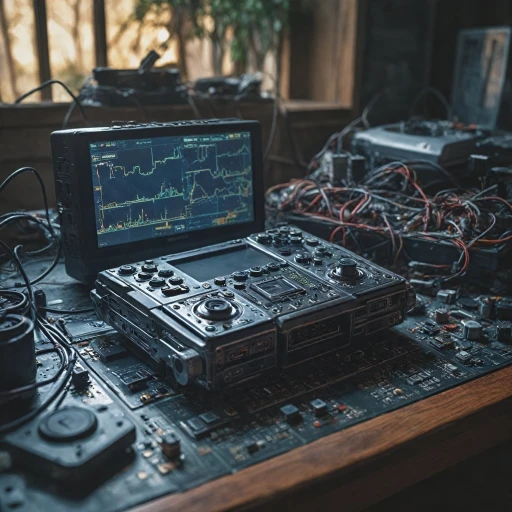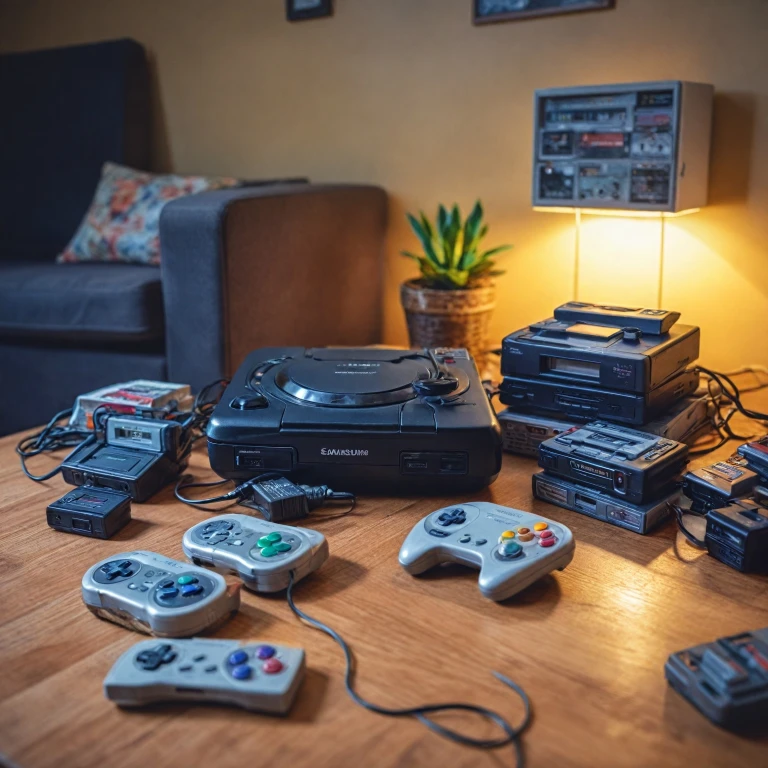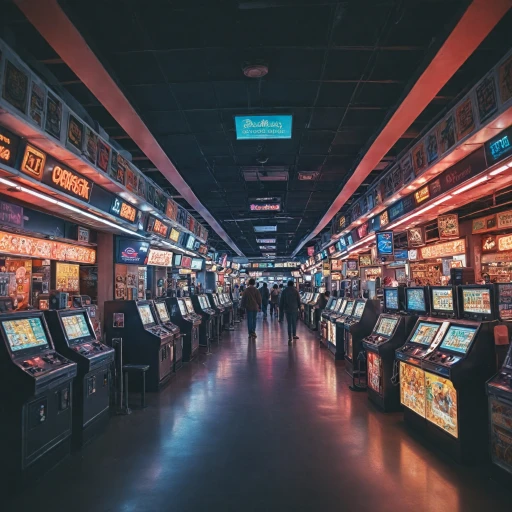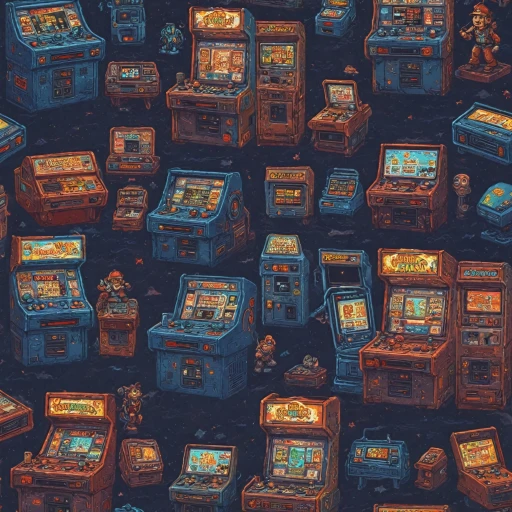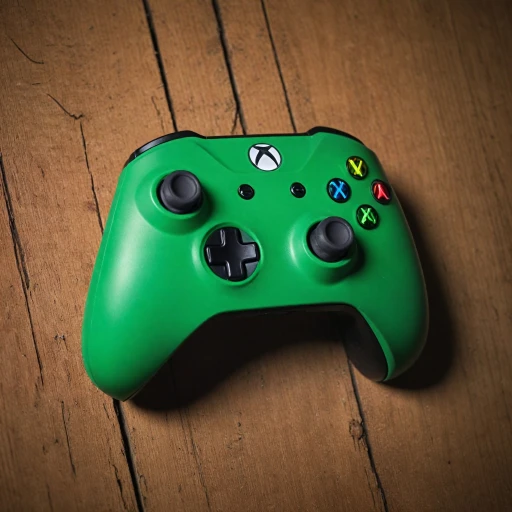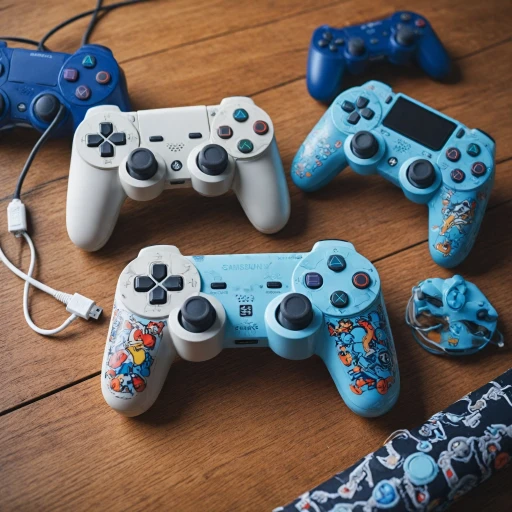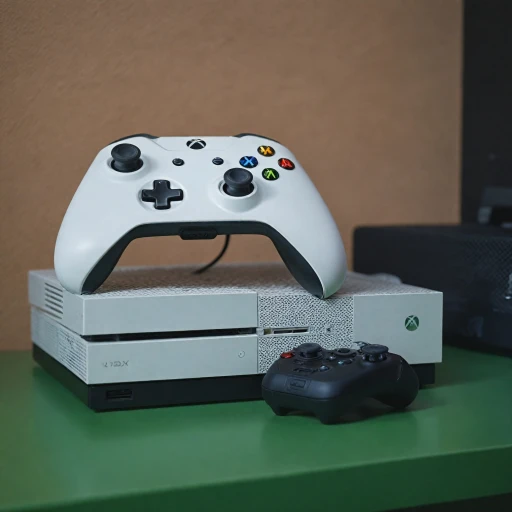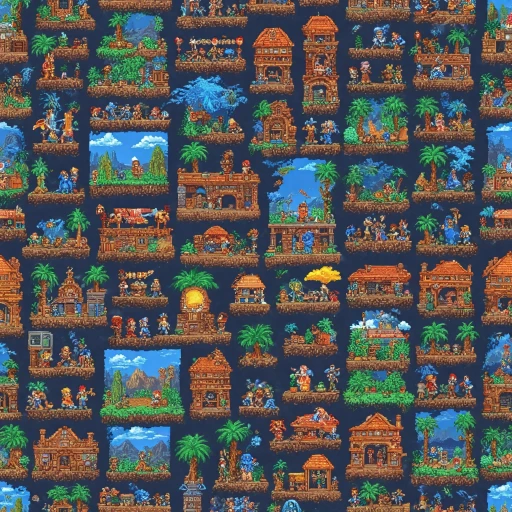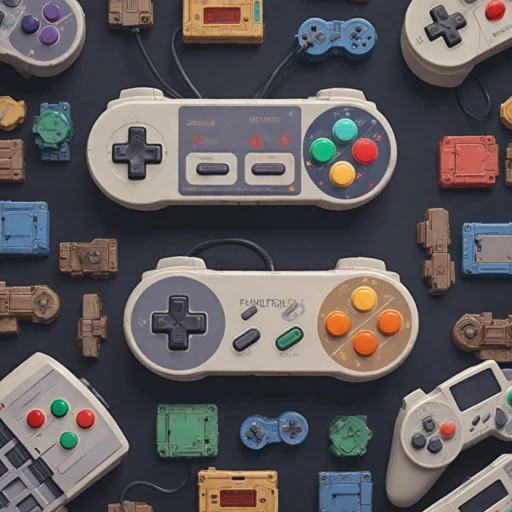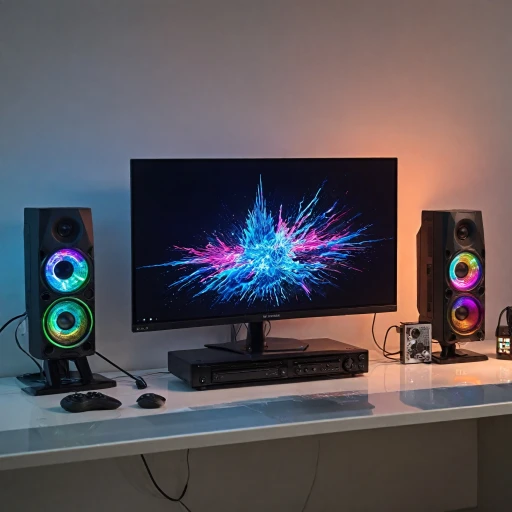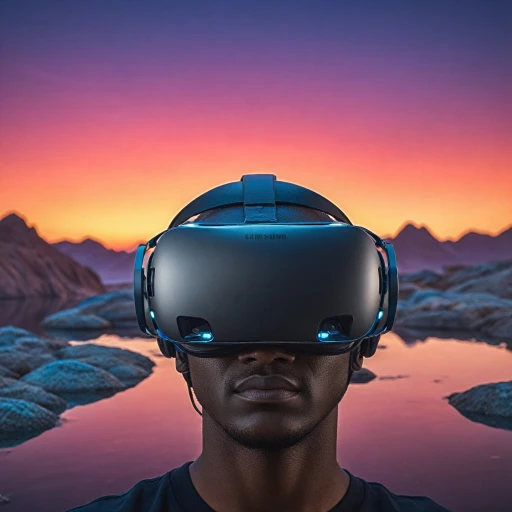The Birth of the Sega Saturn
The Genesis of a Gaming Icon
In the mid-1990s, the gaming world was abuzz with anticipation for the next big system from Sega. Known for its earlier success with the Mega Drive in some regions, the company aimed to redefine home entertainment with its latest creation—the Sega Saturn. This endeavor was a significant milestone, setting the stage to challenge formidable players like the Sony PlayStation and Nintendo's offerings.
The Saturn console, characterized by its sleek black design, featured an impressive array of components that symbolized Sega's commitment to cutting-edge technology. Each unit was equipped with dual CPU architecture, a 32-bit powerhouse that promised a revolutionary gaming experience. The system was meticulously tested for performance, ensuring it could handle the complex, multimedia-rich titles in development at the time.
Initially, Japan was the first market to witness the Saturn's debut, where it quickly gained a reputation for delivering stunning graphics and engaging gameplay. The launch, however, was not just about hardware. Sega bundled the console with "Virtua Fighter," an innovative title that became synonymous with the stunning capabilities of the Saturn. This game highlighted the potential for immersive gaming experiences that were only possible on this next-gen platform.
Although intended to compete with formidable rivals like the Microsoft Xbox down the line, the Saturn faced its most immediate comparison with the Sony PlayStation and the already established Nintendo systems. As consumers eagerly anticipated the state-of-the-art technology and iconic games the Saturn would offer, discussions often centered on its market positioning and shipping logistics—both crucial elements in its pricing strategy.
The Saturn did not just represent another box to sit next to television sets. It was a symbol of Sega's bold leap into the new era of video game consoles. While technology enthusiasts marveled at its specifications, gamers were captivated by the possibilities of what new adventures lay ahead. As you look back today, it's evident that the birth of the Saturn was more than just a product release; it was a testament to innovation and ambition in an evolving entertainment landscape.
Technical Specifications and Features
Unveiling the Inner Workings of the Saturn System
The Sega Saturn marked a significant shift in console design during its time, offering a complex architecture that set it apart from its contemporaries. When the Saturn console was released, it was equipped with a unique setup comprising dual Hitachi SH-2 CPUs. This choice of utilizing multiple processors was ambitious, designed to enhance 3D graphics capabilities—a decision that aimed to compete directly with the emerging market contenders like the Sony PlayStation and later the Nintendo 64.
Within the Saturn model, the central processing units were supported by a robust graphics processing unit and a dedicated sound processor. One of the standout features was its ability to generate up to 500,000 polygons per second, making it well-suited for games like "Virtua Fighter" which tested the system's prowess in rendering smooth 3D environments.
However, the Sega Saturn also came with complexity under the hood, a factor that posed significant challenges. The architecture, while advanced, was notoriously difficult for developers to harness effectively. Coding for two CPUs required intricate command of the system, resulting in a more challenging development process compared to single-processor systems like the Sony PlayStation.
The Saturn system console was well-equipped with a CD-ROM drive, a forward-thinking choice at the time that shifted away from cartridges, mirroring trends seen in other systems like the PlayStation. This facilitated larger data storage for more expansive video game experiences which developers at the time began exploring.
For users, the Saturn black console offered an array of ports accommodating its peripherals. The most notable was the Sega Saturn controller—a design that accommodated both traditional D-pad and shoulder buttons, enabling a wide range of control styles suitable for different game genres.
Despite its technical innovations, the Saturn's complex architecture and higher price tag contributed to its challenges in the market. As the console celebrated its releases in Japan and abroad, the intricacies within its console box remained a double-edged sword—providing outstanding features for those who mastered them but also barriers that tested developers' patience and expertise. To learn further about how other systems of the era fared, you might want to delve into
this exploration of the Turbo Graphics console. This context sheds light on the varied approaches taken in video game hardware innovation during the 1990s.
Game Library and Notable Titles
An Impressive Collection of Games and Noteworthy Titles
The Sega Saturn's game library is often celebrated for its unique and diverse offerings, a testament to the innovative spirit present at its launch. While facing fierce competition from systems like the Sony PlayStation and Nintendo 64, the Saturn console carved out its niche with a rich array of titles that still captivate enthusiasts today.
One standout characteristic of the Saturn was its ability to deliver high-quality arcade experiences at home. This was perhaps best exemplified by "Virtua Fighter," a game that set the standard for 3D fighting games. It demonstrated the system's prowess in rendering detailed 3D graphics, which, at the time, was no small feat for a home console.
The Saturn also had a strong selection of RPGs, including titles like "Panzer Dragoon Saga," revered among RPG aficionados for its intricate narrative and immersive world-building. While these games were a testament to the system's capabilities, the console struggled to keep up with the rapidly growing game libraries of its competitors.
Additionally, the Sega Saturn's performance in Japan was more robust than in other markets, thanks in part to Japan-exclusive titles that never made it internationally. Games like "Radiant Silvergun" and "Dragon Force" contributed to its strong showing in its home market.
However, the fragmented release strategy and the high price of the Saturn often meant that many titles remained out of reach for international players, leading Sega to miss out on leveraging its entire game library.
For enthusiasts seeking to recapture the authentic Saturn experience, building a collection can be a rewarding, albeit challenging, endeavor. Fortunately, modern technologies like emulation have made it easier to access these classics without the need for original hardware. For a deeper dive into the world of gaming consoles, check out this
exploration of gaming consoles.
In conclusion, while the Sega Saturn's game library had its limitations, it also contained jewels that all video game fans can appreciate, reflecting a vibrant era in gaming history.
Obstacles in the Marketplace
The Sega Saturn faced significant challenges in the gaming market upon its release, ultimately impacting its commercial success. One of the primary obstacles was the fierce competition from other major gaming companies. At that time, the market was dominated by the likes of Sony PlayStation and Nintendo's systems, making it tough for the Saturn console to carve out a niche.
The sudden launch is also a noteworthy factor. To get a head start against the emerging Sony PlayStation, Sega decided to release the Sega Saturn earlier than planned. This rush resulted in unexpected shipping issues and limited availability, which frustrated retailers and consumers alike. With the release date moved up, developers were left scrambling to finalize games, leading to a lean game library at launch.
Moreover, the pricing strategy for the Sega Saturn was another hurdle. The model was initially priced higher than both the Sony PlayStation and the Nintendo console, which made it less attractive to price-sensitive consumers who were testing the waters of next-gen video games. The high price point, when combined with the rushed launch, negatively affected the perceived value of the console.
Technical challenges were also a significant factor. The Saturn system featured complex architecture, making it difficult for developers to create games. This led to fewer third-party titles being released compared to other systems like the PlayStation. Furthermore, while the Saturn was praised for games like Virtua Fighter, it struggled to match the graphical prowess and versatile game library of the competition.
Despite releasing several interesting models, including the distinctive Saturn black and console bundles, it couldn't sustain momentum. The system eventually lagged behind in terms of sales figures, setting the stage for Sega to rethink their strategy in future systems like the Dreamcast.
The combination of strategic missteps and fierce competition from rivals like Microsoft's Xbox and Nintendo ultimately defined the market performance of the Sega Saturn, a critical chapter in the console's history that shaped its legacy.
Cultural Impact and Legacy
Resonating Through Generations
The Sega Saturn, despite facing stiff competition from the likes of Sony PlayStation and the popular Nintendo models, carved out its own cultural niche that resonates with gaming enthusiasts to this day. Its release time was a period of intense innovation and experimentation in the video game world, and though it didn't top the sales charts when compared with its rivals, it still left a significant mark.
The system’s unique blend of classic arcade ports, like the legendary "Virtua Fighter," propelled Sega Saturn to become a respected console among gamers. The specific features and distinct game box designs contributed to its continued allure. Many players appreciated the system’s emphasis on delivering an authentic arcade experience at home, which was enhanced by the Saturn controller’s thoughtful design.
Moreover, the Sega Saturn’s role as a predecessor to consoles like the Microsoft Xbox cannot be ignored. Though it didn’t have the prolonged commercial success of recent systems, elements of its innovation paved the way for future advancements.
The Saturn's legacy also stands out in how it opened avenues for more Japanese video game content to grace Western markets, thereby enriching the diversity of gaming experiences available to a broader audience. It cultivated interest in classic gaming genres that have seen a resurgence in recent years.
In true gamer community fashion, this console era continues to captivate collectors and retro gaming aficionados. The price and demand for Sega Saturn units, particularly the black model, and its game library have ascended with newfound value amongst collectors and enthusiasts.
Collecting and archiving these classic games is further complemented by modern advances in emulation software, allowing players worldwide to appreciate the Saturn’s depth, often tested working with various emulation tools. These efforts ensure that the legacy of the Sega Saturn system remains accessible for those who wish to experience its unique place in gaming history.
Collecting and Emulation in Modern Times
Modern Enthusiasts and the Saturn Revival
The nostalgia and intrigue surrounding the Sega Saturn continue to captivate both collectors and tech enthusiasts today. While not the most successful among its peers, the Saturn has carved a niche for itself in the retro gaming community. Its unique place in gaming history, combined with its challenging development story, makes it an appealing target for collectors aiming to own pieces of gaming's storied past.
For those seeking to experience the Saturn without the hefty price tag that often accompanies classic consoles, emulation emerges as a popular alternative. The development community has poured time into creating emulators that allow gamers to relive their favorite Saturn titles. This has kept classics like "Virtua Fighter" and other notable Sega games alive on modern systems, including PCs and Android devices.
Collecting the Saturn can sometimes be akin to treasure hunting, with rarity and condition driving the market. Original Saturn models, especially those in a Saturn black finish, are highly sought after, and finding a complete console box can be a collector's dream. Furthermore, the allure of original controllers and bundled games only adds to the system's desirability.
Shipping data from various auction platforms shows the increasing interest in acquiring these game consoles, reinforcing the Saturn's growing legacy. Collectors also prize specific regional versions, such as those released in Japan, which are viewed as authentic representations of the system’s intended experience.
While modern gaming consoles such as the Sony PlayStation and Microsoft Xbox dominate the market, the Sega Saturn remains a gem within the retro gaming community. Its legacy lives on through those who cherish its history, either preserving its original hardware or by engaging with the Saturn through the lens of modern emulation technologies. The Saturn's journey has set the stage for discussions about game preservation and the celebration of video game history that continues to inspire investigations into other classic systems like the Game Boy or Neo Geo. As interest persists, the Saturn’s place in the annals of gaming history remains firmly in place, cementing its status as both a cultural and technological icon.
